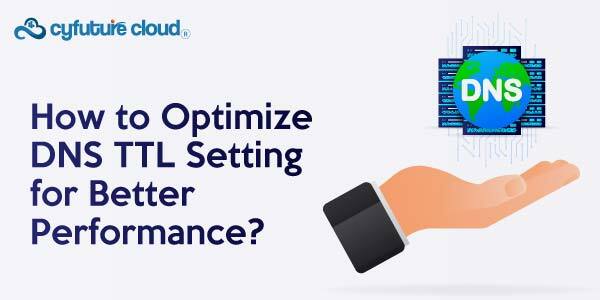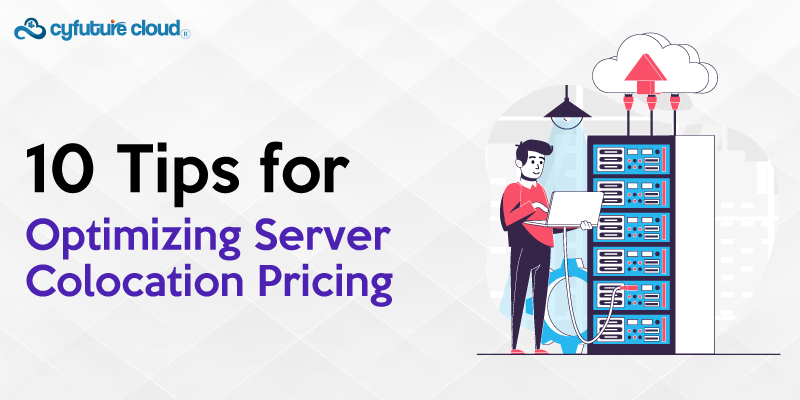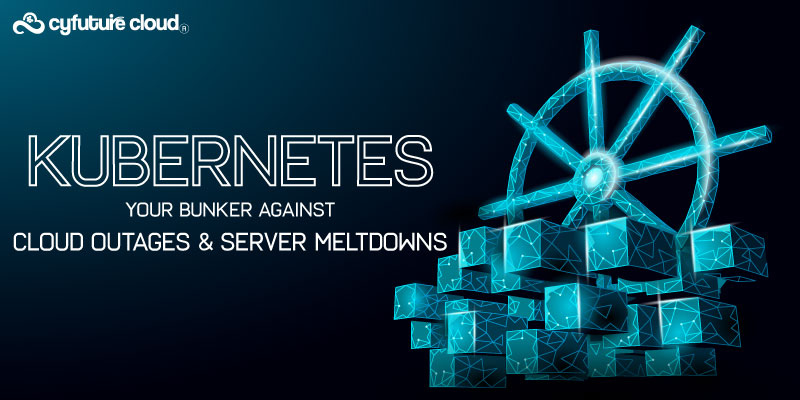Businesses are continuously looking for novel methods to simplify expenses and enhance operations in today’s fast-paced digital environment. Cloud Flex Storage is one such ground-breaking technology that has skyrocketed in popularity. With its unmatched versatility and cost-effectiveness, this cutting-edge technology has emerged as a game-changer as businesses struggle with the ever-increasing amounts of data and the need for scalable storage alternatives.
A startling 67% of businesses have already used Cloud Flex Storage to power their digital transformation activities, according to recent industry surveys. This data demonstrates the tremendous trend toward cloud-based storage solutions as organizations come to appreciate the wealth of advantages they provide.
However, what precisely is Cloud Flex Storage? It is a storage solution that, to put it simply, makes use of cloud computing.
Understanding Cloud Flex Storage
Cloud Flex Storage, also known as flexible cloud storage, is a cutting-edge storage solution that harnesses the power of cloud computing to provide businesses with on-demand and scalable storage resources. Unlike traditional storage methods that require physical hardware and fixed capacities, Cloud Flex Storage allows organizations to dynamically adjust their storage needs based on real-time requirements.
– Scalability: One of the key characteristics of Cloud Flex Storage is its inherent scalability. Businesses can seamlessly scale up or down their storage capacity as needed, without the hassle of procuring and managing physical storage infrastructure. This agility ensures that companies can effectively handle data growth without overprovisioning or experiencing storage limitations.
– Pay-as-you-go: Cloud Flex Storage operates on a pay-as-you-go model, providing businesses with cost-effective storage options. Rather than making substantial upfront investments in hardware and infrastructure, organizations only pay for the storage resources they consume. This flexibility allows businesses to optimize costs and allocate resources efficiently.
Benefits of Cloud Flex Storage in Terms of Cost Optimization
Cloud Flex Storage offers a range of benefits that contribute to significant cost optimization for businesses.
– Reduced Capital Expenditure: Traditional storage solutions often require substantial capital expenditure to establish and maintain storage infrastructure. However, with Cloud Flex Storage, businesses can eliminate the need for upfront investments in hardware, minimizing capital expenditure. This cost-effective approach allows organizations to allocate resources to other critical areas of their operations.
– Elimination of Overprovisioning: Overprovisioning storage capacity is a common challenge faced by organizations using traditional storage methods. Cloud Flex Storage addresses this issue by providing businesses with the ability to dynamically adjust their storage capacity. By eliminating the need for overprovisioning, companies can optimize resource utilization and reduce unnecessary expenses.
– Operational Efficiency: Cloud Flex Storage eliminates the burden of managing and maintaining physical storage infrastructure. This frees up valuable IT resources, allowing them to focus on more strategic initiatives rather than routine maintenance tasks. As a result, businesses can achieve higher operational efficiency and drive productivity gains.
– Cost Predictability: Cloud Flex Storage offers cost predictability, as organizations only pay for the storage resources they consume. This eliminates the risk of overpaying for unused or underutilized storage capacity. The pay-as-you-go model allows businesses to align costs with actual storage needs, providing better financial control and transparency.
Comparison with Traditional Storage Solutions
When comparing Cloud Flex Storage with traditional storage solutions, several distinct advantages become apparent.
– Flexibility: Cloud Flex Storage provides unparalleled flexibility compared to traditional storage methods. It allows businesses to scale their storage capacity up or down on demand, ensuring optimal resource utilization and adaptability to changing business requirements. Traditional storage solutions often lack this level of agility and require significant effort to scale or reconfigure.
– Cost Efficiency: Cloud Flex Storage’s pay-as-you-go model significantly reduces storage costs. In contrast, traditional storage solutions often involve upfront capital investments, maintenance expenses, and overprovisioning of storage capacity. The ability to optimize costs with Cloud Flex Storage makes it an attractive choice for businesses looking to streamline their budget allocation.
– Scalability: With Cloud Flex Storage, businesses can easily scale their storage capacity as their data volumes grow. Traditional storage solutions may require businesses to purchase additional hardware, leading to delays, costs, and potential disruptions. The scalability of Cloud Flex Storage ensures that businesses can handle increased data demands seamlessly.
– Management Simplicity: Cloud Flex Storage simplifies storage management by eliminating the need for organizations to handle physical hardware. In contrast, traditional storage solutions require extensive IT management, including monitoring, maintenance, and upgrades. Cloud Flex Storage allows businesses to offload these responsibilities to cloud service providers, enabling them to focus on core business activities.
Understanding the nuances and advantages of Cloud Flex Storage is crucial for organizations seeking to optimize their storage infrastructure. By embracing this innovative solution, businesses can unlock a range of benefits, including cost optimization, enhanced flexibility, scalability, and simplified management.
With the rising adoption rate of Cloud Flex Storage, it’s evident that businesses are recognizing the value it brings. The ability to dynamically adjust storage capacity, pay for what is consumed, and eliminate overprovisioning resonates strongly with companies aiming to optimize their costs. Moreover, the agility and scalability offered by Cloud Flex Storage empower organizations to meet evolving storage demands without the constraints of traditional storage solutions.
When compared to traditional storage methods, Cloud Flex Storage stands out as a modern and efficient alternative. The flexibility it offers allows businesses to adapt to changing storage requirements seamlessly. In terms of cost efficiency, Cloud Flex Storage’s pay-as-you-go model eliminates upfront capital expenditure and wastage, ensuring that organizations only pay for what they actually use. The scalability of Cloud Flex Storage accommodates data growth without the need for complex hardware procurement and setup. Additionally, the simplified management of Cloud Flex Storage allows businesses to focus on their core operations rather than dealing with the intricacies of physical storage infrastructure.
To delve further into the intricacies of Cloud Flex Storage and its impact on modern businesses, refer to the complete blog. It provides in-depth insights, real-world examples, and expert recommendations, enabling you to make informed decisions about your storage infrastructure. Don’t miss out on the opportunity to unlock the full potential of Cloud Flex Storage and drive your business towards success in the digital era.
Key Considerations for Implementing Cloud Flex Storage for Cost Optimization
Implementing Cloud Flex Storage requires careful planning and consideration to ensure maximum cost optimization. Here are key factors to consider:
Understanding your Organization’s Storage Requirements and Cost Drivers
Before implementing Cloud Flex Storage, it is crucial to have a comprehensive understanding of your organization’s storage requirements and cost drivers. Analyze the volume, growth rate, and types of data your organization handles. Identify the storage needs for different data categories, such as structured, unstructured, or archival data. By understanding your storage requirements, you can effectively optimize costs by selecting the appropriate storage tiers and capacity.
Evaluating Cloud Service Providers and their Cloud Flex Storage Offerings
Not all cloud service providers offer the same Cloud Flex Storage capabilities, pricing models, or service level agreements. It is essential to thoroughly evaluate different providers and their Cloud Flex Storage offerings. Consider factors such as storage costs, performance guarantees, data durability, data transfer costs, and availability zones. Choose a provider that aligns with your cost optimization goals and offers the necessary features to meet your storage requirements.
Scalability and Elasticity Planning to Optimize Resource Allocation
Scalability and elasticity are key advantages of Cloud Flex Storage. Plan your resource allocation strategy to optimize costs effectively. Consider the growth rate of your data and projected storage needs. Design your storage architecture to leverage the elasticity of the cloud, allowing you to scale storage capacity up or down as needed. Implement intelligent monitoring and auto-scaling mechanisms to ensure optimal resource utilization and avoid overprovisioning, which can lead to unnecessary expenses.
Data Management and Migration Strategies for Cost Optimization
Effective data management and migration strategies are crucial for cost optimization when implementing Cloud Flex Storage. Assess your data lifecycle and implement appropriate storage tiering and archiving policies. Identify data that requires frequent access versus data that can be stored in lower-cost storage tiers. Implement data deduplication, compression, and optimization techniques to reduce storage costs. Additionally, carefully plan and execute data migration to the cloud, considering factors such as data transfer costs, data transfer time, and potential downtime. Efficient data management and migration strategies can significantly contribute to cost optimization.
By considering these key factors during the implementation of Cloud Flex Storage, organizations can optimize their costs effectively, ensure efficient resource utilization, and maximize the benefits of this flexible storage solution.
Future Trends and Outlook
Emerging Technologies and Innovations in Cloud Flex Storage
The future of Cloud Flex Storage is poised to witness further advancements and innovations driven by emerging technologies. Here are some key trends to watch out for:
– Artificial Intelligence (AI) and Machine Learning (ML): AI and ML technologies are being integrated into Cloud Flex Storage to enable intelligent storage management. These technologies can analyze data usage patterns, optimize storage allocation, and automate cost optimization processes, resulting in more efficient resource utilization and improved cost savings.
– Edge Computing Integration: As edge computing gains momentum, we can expect closer integration between Cloud Flex Storage and edge devices. This integration will enable organizations to store and process data closer to the point of generation, reducing latency and bandwidth costs while optimizing storage usage.
– Data Security Enhancements: With data security being a paramount concern, future innovations in Cloud Flex Storage will focus on robust encryption, advanced access controls, and enhanced data protection mechanisms. These advancements will provide companies with peace of mind when storing sensitive data in the cloud.
Predictions for the Future of Cost Optimization through Cloud Flex Storage
Looking ahead, the future of cost optimization through Cloud Flex Storage appears promising. Here are some predictions:
– Continued Cost Reduction: As technology advances and competition among cloud service providers intensifies, we can expect further cost reductions in Cloud Flex Storage. Providers will strive to offer more competitive pricing models, storage tiers, and cost optimization tools, making cloud storage an even more cost-effective solution for businesses.
– Advanced Analytics for Cost Optimization: The integration of advanced analytics and data-driven insights will play a crucial role in optimizing costs through Cloud Flex Storage. Predictive analytics and machine learning algorithms will be leveraged to analyze usage patterns, identify cost optimization opportunities, and make proactive recommendations for storage optimization.
– Multi-Cloud and Hybrid Cloud Strategies: Many organizations are adopting multi-cloud and hybrid cloud strategies to leverage the benefits of multiple cloud service providers. In the future, Cloud Flex Storage solutions will be designed to seamlessly integrate with these strategies, enabling businesses to optimize costs by leveraging the strengths of different cloud providers and storage options.
– Increased Automation and Intelligent Resource Allocation: Automation will play a key role in optimizing costs through Cloud Flex Storage. Intelligent algorithms will automate resource allocation, scaling, and tiering based on real-time demands and cost considerations. This automation will ensure efficient resource utilization, reduce human intervention, and further drive cost optimization.
Recommendations for Companies Looking to Leverage Cloud Flex Storage for Cost Optimization
To leverage Cloud Flex Storage for cost optimization, companies should consider the following recommendations:
– Regularly Assess and Optimize Storage Needs: Continuously assess your storage requirements and evaluate data growth patterns. Optimize your storage allocation, tiering, and archiving strategies to ensure that data is stored in the most cost-efficient manner while meeting business needs.
– Stay Informed about Cloud Service Providers: Keep track of the evolving offerings and pricing models of different cloud service providers. Regularly evaluate and compare their Cloud Flex Storage options to choose the provider that best aligns with your cost optimization goals and offers the necessary features and performance guarantees.
– Implement Cost Monitoring and Optimization Tools: Leverage cost monitoring and optimization tools provided by cloud service providers. These tools can help you track and analyze storage costs, identify cost drivers, and implement measures to optimize resource allocation and usage.
– Embrace Automation and Analytics: Embrace automation and leverage advanced analytics to optimize storage costs. Implement intelligent resource allocation mechanisms and predictive analytics to ensure efficient utilization, automate scaling, and make data-driven decisions for cost optimization.
By following these recommendations, companies can maximize the cost optimization potential of Cloud Flex Storage, stay ahead of evolving trends, and make informed decisions to drive efficiency and competitiveness in their storage infrastructure.
Final Thoughts
Cloud Flex Storage offers companies a powerful solution for optimizing costs and achieving efficient storage infrastructure. By leveraging its scalability, elasticity, and pay-as-you-go model, businesses can reduce capital expenditure, eliminate overprovisioning, improve resource utilization, and simplify storage management.
The future of cost optimization in the cloud storage landscape looks promising. As technology continues to advance, we can expect further innovations and enhancements in Cloud Flex Storage. Emerging technologies like AI, ML, and edge computing will drive efficiency, while advanced analytics and automation will empower businesses to optimize costs effectively.
However, it is crucial for companies to stay informed, regularly assess their storage needs, and make informed decisions when selecting cloud service providers and implementing storage strategies. With the right approach and careful consideration of factors like storage requirements, provider evaluation, scalability planning, and data management strategies, businesses can unlock the full potential of Cloud Flex Storage and achieve substantial cost savings.
As the digital landscape evolves and businesses increasingly rely on data storage and management, leveraging Cloud Flex Storage for cost optimization will become even more critical. By embracing this flexible and efficient storage solution, companies can stay agile, drive innovation, and remain competitive in the ever-evolving digital economy.
Businesses are continuously looking for novel methods to simplify expenses and enhance operations in today’s fast-paced digital environment. Cloud Flex Storage is one such ground-breaking technology that has skyrocketed in popularity. With its unmatched versatility and cost-effectiveness, this cutting-edge technology has emerged as a game-changer as businesses struggle with the ever-increasing amounts of data and the need for scalable storage alternatives.
A startling 67% of businesses have already used Cloud Flex Storage to power their digital transformation activities, according to recent industry surveys. This data demonstrates the tremendous trend toward cloud-based storage solutions as organizations come to appreciate the wealth of advantages they provide.
However, what precisely is Cloud Flex Storage? It is a storage solution that, to put it simply, makes use of cloud computing.
Understanding Cloud Flex Storage
Cloud Flex Storage, also known as flexible cloud storage, is a cutting-edge storage solution that harnesses the power of cloud computing to provide businesses with on-demand and scalable storage resources. Unlike traditional storage methods that require physical hardware and fixed capacities, Cloud Flex Storage allows organizations to dynamically adjust their storage needs based on real-time requirements.
– Scalability: One of the key characteristics of Cloud Flex Storage is its inherent scalability. Businesses can seamlessly scale up or down their storage capacity as needed, without the hassle of procuring and managing physical storage infrastructure. This agility ensures that companies can effectively handle data growth without overprovisioning or experiencing storage limitations.
– Pay-as-you-go: Cloud Flex Storage operates on a pay-as-you-go model, providing businesses with cost-effective storage options. Rather than making substantial upfront investments in hardware and infrastructure, organizations only pay for the storage resources they consume. This flexibility allows businesses to optimize costs and allocate resources efficiently.
Benefits of Cloud Flex Storage in Terms of Cost Optimization
Cloud Flex Storage offers a range of benefits that contribute to significant cost optimization for businesses.
– Reduced Capital Expenditure: Traditional storage solutions often require substantial capital expenditure to establish and maintain storage infrastructure. However, with Cloud Flex Storage, businesses can eliminate the need for upfront investments in hardware, minimizing capital expenditure. This cost-effective approach allows organizations to allocate resources to other critical areas of their operations.
– Elimination of Overprovisioning: Overprovisioning storage capacity is a common challenge faced by organizations using traditional storage methods. Cloud Flex Storage addresses this issue by providing businesses with the ability to dynamically adjust their storage capacity. By eliminating the need for overprovisioning, companies can optimize resource utilization and reduce unnecessary expenses.
– Operational Efficiency: Cloud Flex Storage eliminates the burden of managing and maintaining physical storage infrastructure. This frees up valuable IT resources, allowing them to focus on more strategic initiatives rather than routine maintenance tasks. As a result, businesses can achieve higher operational efficiency and drive productivity gains.
– Cost Predictability: Cloud Flex Storage offers cost predictability, as organizations only pay for the storage resources they consume. This eliminates the risk of overpaying for unused or underutilized storage capacity. The pay-as-you-go model allows businesses to align costs with actual storage needs, providing better financial control and transparency.
Comparison with Traditional Storage Solutions
When comparing Cloud Flex Storage with traditional storage solutions, several distinct advantages become apparent.
– Flexibility: Cloud Flex Storage provides unparalleled flexibility compared to traditional storage methods. It allows businesses to scale their storage capacity up or down on demand, ensuring optimal resource utilization and adaptability to changing business requirements. Traditional storage solutions often lack this level of agility and require significant effort to scale or reconfigure.
– Cost Efficiency: Cloud Flex Storage’s pay-as-you-go model significantly reduces storage costs. In contrast, traditional storage solutions often involve upfront capital investments, maintenance expenses, and overprovisioning of storage capacity. The ability to optimize costs with Cloud Flex Storage makes it an attractive choice for businesses looking to streamline their budget allocation.
– Scalability: With Cloud Flex Storage, businesses can easily scale their storage capacity as their data volumes grow. Traditional storage solutions may require businesses to purchase additional hardware, leading to delays, costs, and potential disruptions. The scalability of Cloud Flex Storage ensures that businesses can handle increased data demands seamlessly.
– Management Simplicity: Cloud Flex Storage simplifies storage management by eliminating the need for organizations to handle physical hardware. In contrast, traditional storage solutions require extensive IT management, including monitoring, maintenance, and upgrades. Cloud Flex Storage allows businesses to offload these responsibilities to cloud service providers, enabling them to focus on core business activities.
Understanding the nuances and advantages of Cloud Flex Storage is crucial for organizations seeking to optimize their storage infrastructure. By embracing this innovative solution, businesses can unlock a range of benefits, including cost optimization, enhanced flexibility, scalability, and simplified management.
With the rising adoption rate of Cloud Flex Storage, it’s evident that businesses are recognizing the value it brings. The ability to dynamically adjust storage capacity, pay for what is consumed, and eliminate overprovisioning resonates strongly with companies aiming to optimize their costs. Moreover, the agility and scalability offered by Cloud Flex Storage empower organizations to meet evolving storage demands without the constraints of traditional storage solutions.
When compared to traditional storage methods, Cloud Flex Storage stands out as a modern and efficient alternative. The flexibility it offers allows businesses to adapt to changing storage requirements seamlessly. In terms of cost efficiency, Cloud Flex Storage’s pay-as-you-go model eliminates upfront capital expenditure and wastage, ensuring that organizations only pay for what they actually use. The scalability of Cloud Flex Storage accommodates data growth without the need for complex hardware procurement and setup. Additionally, the simplified management of Cloud Flex Storage allows businesses to focus on their core operations rather than dealing with the intricacies of physical storage infrastructure.
To delve further into the intricacies of Cloud Flex Storage and its impact on modern businesses, refer to the complete blog. It provides in-depth insights, real-world examples, and expert recommendations, enabling you to make informed decisions about your storage infrastructure. Don’t miss out on the opportunity to unlock the full potential of Cloud Flex Storage and drive your business towards success in the digital era.
Key Considerations for Implementing Cloud Flex Storage for Cost Optimization
Implementing Cloud Flex Storage requires careful planning and consideration to ensure maximum cost optimization. Here are key factors to consider:
Understanding your Organization’s Storage Requirements and Cost Drivers
Before implementing Cloud Flex Storage, it is crucial to have a comprehensive understanding of your organization’s storage requirements and cost drivers. Analyze the volume, growth rate, and types of data your organization handles. Identify the storage needs for different data categories, such as structured, unstructured, or archival data. By understanding your storage requirements, you can effectively optimize costs by selecting the appropriate storage tiers and capacity.
Evaluating Cloud Service Providers and their Cloud Flex Storage Offerings
Not all cloud service providers offer the same Cloud Flex Storage capabilities, pricing models, or service level agreements. It is essential to thoroughly evaluate different providers and their Cloud Flex Storage offerings. Consider factors such as storage costs, performance guarantees, data durability, data transfer costs, and availability zones. Choose a provider that aligns with your cost optimization goals and offers the necessary features to meet your storage requirements.
Scalability and Elasticity Planning to Optimize Resource Allocation
Scalability and elasticity are key advantages of Cloud Flex Storage. Plan your resource allocation strategy to optimize costs effectively. Consider the growth rate of your data and projected storage needs. Design your storage architecture to leverage the elasticity of the cloud, allowing you to scale storage capacity up or down as needed. Implement intelligent monitoring and auto-scaling mechanisms to ensure optimal resource utilization and avoid overprovisioning, which can lead to unnecessary expenses.
Data Management and Migration Strategies for Cost Optimization
Effective data management and migration strategies are crucial for cost optimization when implementing Cloud Flex Storage. Assess your data lifecycle and implement appropriate storage tiering and archiving policies. Identify data that requires frequent access versus data that can be stored in lower-cost storage tiers. Implement data deduplication, compression, and optimization techniques to reduce storage costs. Additionally, carefully plan and execute data migration to the cloud, considering factors such as data transfer costs, data transfer time, and potential downtime. Efficient data management and migration strategies can significantly contribute to cost optimization.
By considering these key factors during the implementation of Cloud Flex Storage, organizations can optimize their costs effectively, ensure efficient resource utilization, and maximize the benefits of this flexible storage solution.
Future Trends and Outlook
Emerging Technologies and Innovations in Cloud Flex Storage
The future of Cloud Flex Storage is poised to witness further advancements and innovations driven by emerging technologies. Here are some key trends to watch out for:
– Artificial Intelligence (AI) and Machine Learning (ML): AI and ML technologies are being integrated into Cloud Flex Storage to enable intelligent storage management. These technologies can analyze data usage patterns, optimize storage allocation, and automate cost optimization processes, resulting in more efficient resource utilization and improved cost savings.
– Edge Computing Integration: As edge computing gains momentum, we can expect closer integration between Cloud Flex Storage and edge devices. This integration will enable organizations to store and process data closer to the point of generation, reducing latency and bandwidth costs while optimizing storage usage.
– Data Security Enhancements: With data security being a paramount concern, future innovations in Cloud Flex Storage will focus on robust encryption, advanced access controls, and enhanced data protection mechanisms. These advancements will provide companies with peace of mind when storing sensitive data in the cloud.
Predictions for the Future of Cost Optimization through Cloud Flex Storage
Looking ahead, the future of cost optimization through Cloud Flex Storage appears promising. Here are some predictions:
– Continued Cost Reduction: As technology advances and competition among cloud service providers intensifies, we can expect further cost reductions in Cloud Flex Storage. Providers will strive to offer more competitive pricing models, storage tiers, and cost optimization tools, making cloud storage an even more cost-effective solution for businesses.
– Advanced Analytics for Cost Optimization: The integration of advanced analytics and data-driven insights will play a crucial role in optimizing costs through Cloud Flex Storage. Predictive analytics and machine learning algorithms will be leveraged to analyze usage patterns, identify cost optimization opportunities, and make proactive recommendations for storage optimization.
– Multi-Cloud and Hybrid Cloud Strategies: Many organizations are adopting multi-cloud and hybrid cloud strategies to leverage the benefits of multiple cloud service providers. In the future, Cloud Flex Storage solutions will be designed to seamlessly integrate with these strategies, enabling businesses to optimize costs by leveraging the strengths of different cloud providers and storage options.
– Increased Automation and Intelligent Resource Allocation: Automation will play a key role in optimizing costs through Cloud Flex Storage. Intelligent algorithms will automate resource allocation, scaling, and tiering based on real-time demands and cost considerations. This automation will ensure efficient resource utilization, reduce human intervention, and further drive cost optimization.
Recommendations for Companies Looking to Leverage Cloud Flex Storage for Cost Optimization
To leverage Cloud Flex Storage for cost optimization, companies should consider the following recommendations:
– Regularly Assess and Optimize Storage Needs: Continuously assess your storage requirements and evaluate data growth patterns. Optimize your storage allocation, tiering, and archiving strategies to ensure that data is stored in the most cost-efficient manner while meeting business needs.
– Stay Informed about Cloud Service Providers: Keep track of the evolving offerings and pricing models of different cloud service providers. Regularly evaluate and compare their Cloud Flex Storage options to choose the provider that best aligns with your cost optimization goals and offers the necessary features and performance guarantees.
– Implement Cost Monitoring and Optimization Tools: Leverage cost monitoring and optimization tools provided by cloud service providers. These tools can help you track and analyze storage costs, identify cost drivers, and implement measures to optimize resource allocation and usage.
– Embrace Automation and Analytics: Embrace automation and leverage advanced analytics to optimize storage costs. Implement intelligent resource allocation mechanisms and predictive analytics to ensure efficient utilization, automate scaling, and make data-driven decisions for cost optimization.
By following these recommendations, companies can maximize the cost optimization potential of Cloud Flex Storage, stay ahead of evolving trends, and make informed decisions to drive efficiency and competitiveness in their storage infrastructure.
Final Thoughts
Cloud Flex Storage offers companies a powerful solution for optimizing costs and achieving efficient
storage infrastructure. By leveraging its scalability, elasticity, and pay-as-you-go model, businesses can reduce capital expenditure, eliminate overprovisioning, improve resource utilization, and simplify storage management.
The future of cost optimization in the cloud storage landscape looks promising. As technology continues to advance, we can expect further innovations and enhancements in Cloud Flex Storage. Emerging technologies like AI, ML, and edge computing will drive efficiency, while advanced analytics and automation will empower businesses to optimize costs effectively.
However, it is crucial for companies to stay informed, regularly assess their storage needs, and make informed decisions when selecting cloud service providers and implementing storage strategies. With the right approach and careful consideration of factors like storage requirements, provider evaluation, scalability planning, and data management strategies, businesses can unlock the full potential of Cloud Flex Storage and achieve substantial cost savings.
As the digital landscape evolves and businesses increasingly rely on data storage and management, leveraging Cloud Flex Storage for cost optimization will become even more critical. By embracing this flexible and efficient storage solution, companies can stay agile, drive innovation, and remain competitive in the ever-evolving digital economy.

 Server Colocation
Server Colocation CDN Network
CDN Network Linux Cloud Hosting
Linux Cloud Hosting Kubernetes
Kubernetes Pricing Calculator
Pricing Calculator
 Power
Power
 Utilities
Utilities VMware Private Cloud
VMware Private Cloud VMware on AWS
VMware on AWS VMware on Azure
VMware on Azure Service Level Agreement
Service Level Agreement 



















